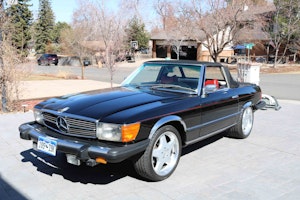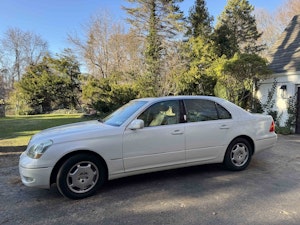Media | Articles
VW’s Piëch is gone, but we are all living in the world he made
I come to bury Ferdinand Piëch’s famed history, not to praise it. By now, with news spreading of Piëch’s death at age 82, you’ve no doubt read remembrances of the Porsche 917, the Bugatti Veyron… possibly even the hyper-efficient (and hyper-costly) Volkswagen Lupo 3L, the world’s most fuel-efficient standard automobile and one reportedly born from a misunderstanding regarding an upcoming Renault product. (The Lupo 3L got its name from its fuel consumption of 3 liters per 100 km, or 78.4 mpg; the Renault Clio 3L was a madcap mid-engined subcompact with, you guessed it, a 3.0-liter V-6.)
Beyond the automotive-enthusiast highlights you have the man himself: driven to extremes by unquenchable ambition, fearsomely brilliant, the father of no fewer than 12 children by four different women. Like Henry V, he was the perfect combination of capability, privilege, and opportunity; unlike Prince Hal, he lived long enough to see all of his desired acquisitions come to fruition.
The above recitation of accomplishments and qualities, although impressive, pathetically understates the former Volkswagen CEO and Chairman’s true impact on the auto business as we know it today. To borrow (and misuse) a phrase, it’s Ferdinand’s world—we’re all just living in it. Every single automaker across the globe continues to be directed by Piëch’s vision, whether they admit it or not. No other auto executive since the time of Henry Ford has done as much to shape what we drive as Piëch. Alfred Sloan? Lee Iacocca? Carlos Ghosn? Don’t make me laugh. There’s Piëch, and then there’s a Challenger Deep’s worth of gap, then there’s everyone else.
Want proof? Go look at a Kia Telluride. It’s a sport-utility from a Korean brand, made in Georgia and sized like a previous-generation Tahoe—but it derives every single one of its aesthetic qualities from the D2-generation Audi A8, which along with the steel-bodied Phaeton was Piëch’s pet project. The Kia is joined in slavish imitation by pretty much every other upscale car in existence, from Aston Martins to Volvos. How about the affordable vehicles out there, the ones you find in rental fleets and lower-middle-class driveways? They’re all still chasing the soft-touch target of the fourth-generation VW Golf, which proved that you could make an $18,000 car that felt and looked better, both inside and out, than the $50,000 competition. Piëch sweated the details on the infamous MkIV and was rewarded with the most impressive compact car in history, even if it proved to be a bit fragile in the hands of owners.
Sure, Lexus set the bar for luxury sedans in 1990 with the LS400, but go look at today’s LS. From the gaping grille to the brushed-metal interior accents, it’s an Audi-alike, sharing virtually nothing with its illustrious predecessor. Meanwhile, its parent producer, Toyota, now boasts about the TNGA, a platform strategy that borrows shamelessly from VW’s MQB platform in terms of concept and execution.
Marketplace
Buy and sell classics with confidence
It seems impossible to believe now, but prior to Piëch there were only two kinds of automotive conglomerates: those that just slapped different badges on largely identical cars (General Motors, British Leyland) and those that engineered multiple unrelated solutions (FIAT, Toyota, VW in the ’80s). Today, we accept without question that the same basic set of components can support a Cayenne, a Bentayga, a Q7, and a Urus—but wait, you can also get the Audi A4 and Q5 from it! This highly modular approach is now the industry standard. It was essentially created from whole cloth by Ferdinand Piëch.
Piëch’s vision was not always executed flawlessly. His purchase of Britain’s automotive crown jewels, Rolls-Royce and Bentley, was somewhat derailed by a failure to secure rights to the Flying Lady and the Rolls-Royce name itself. At the time, it was thought that Bentley was the more valuable marque of the two, but today few would make that claim, particularly after observing the current product lineups of each. When Piëch secured the services of GM executive J. Ignacio Lopez by promising to build an entire factory in Lopez’s home region of Spain, most industry observers assumed that Lopez would revolutionize VW’s purchasing, but what happened instead was a catastrophic chain of lawsuits and criminal charges that cost Piëch both money and prestige.
In the end, however, Piëch’s legacy will not be defined by the ascension of Audi, the omnipresence of platform strategy, or the now-ubiquitous adversarial relationships between manufacturers and suppliers. Rather, it will be his decision to massively expand the VW Group through the acquisition of major manufacturers around the globe, which will make his vision relevant—indeed, mandatory—well into the future. Ferdinand Piëch became Chairman of the Board in a world where small automakers survived and often thrived, where a better idea could beat a bigger factory and where minor players like Honda and Saab often gave a bloody nose to their better-funded competition. He stepped down from that job in a world where there is room for just three or four Brobdingnagian automakers, where Ford and FIAT might not be big enough to survive into the second half of the century. That change was almost entirely due to Piëch and his ability to supercharge the economies of scale.
Yes, Piëch was the “father” of the 917, the Audi quattro, the Bugatti Veyron. Yes, he was a brilliant engineer and massively compelling individual. Had he been nothing more than that, we could mourn him whole-heartedly and uncritically. Yet I am afraid that in the long run he will be remembered not for the stunning individuality of his engineering accomplishments, but for the soporific effect of his all-encompassing vision on the auto industry as a whole. He gave us the Gulf-blue LeMans winners and an Audi that could climb a ski hill, but he took away everything from sensibly-sized Rolls-Royce sedans to charmingly bespoke Citroën superminis. As the former owner of two utterly perfect (and perfectly frustrating) VW Phaetons, someone who spent some of the best moments of my life behind the wheel of Piëch’s purest products, I can forgive him for all of that. Will the rest of the world feel the same way?










